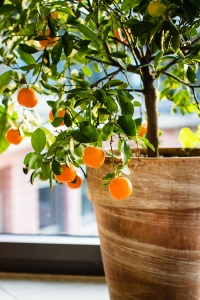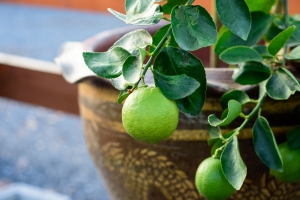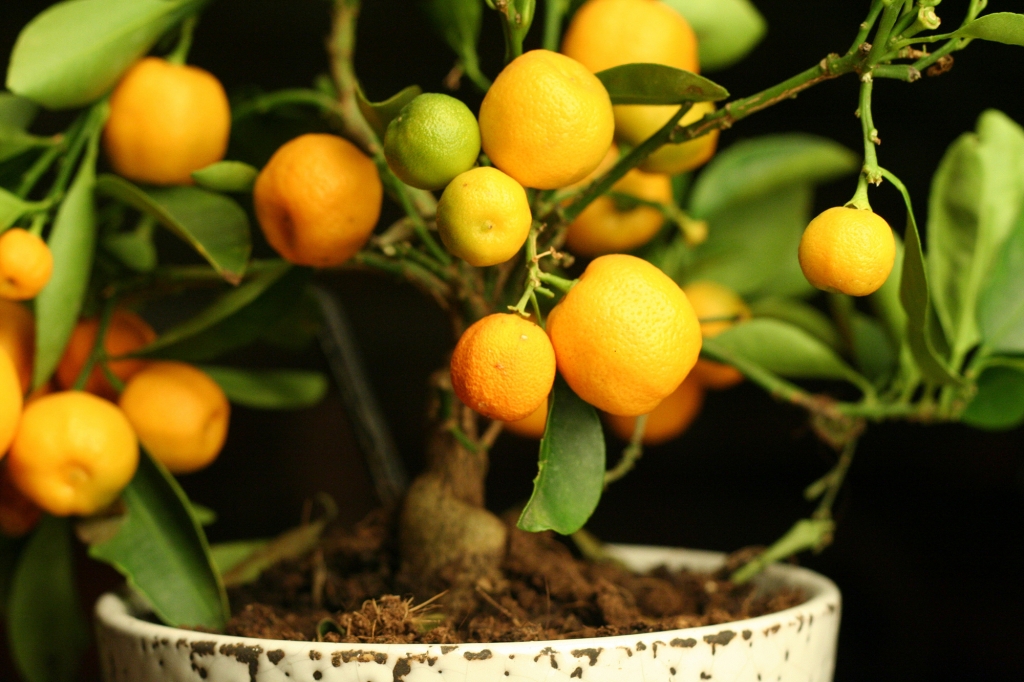Growing citrus indoors is possible and can be a beautiful element to add to the home. Though Southern California has the ideal climate to grow the citrus trees outdoors, there are several cultivars that are suitable for growing indoors. Lemons or limes are usually the best ones to place inside, but other dwarf varieties of citrus work well too.
 Meyer or Ponderosa lemons which are both dwarfs grow nicely in containers. Tangerines, such as a Satsuma (has a lovely aroma), Meiwa kumquat, Kaffir limes, Tahitian orange and Calamondin orange also do nicely indoors.
Meyer or Ponderosa lemons which are both dwarfs grow nicely in containers. Tangerines, such as a Satsuma (has a lovely aroma), Meiwa kumquat, Kaffir limes, Tahitian orange and Calamondin orange also do nicely indoors.
It’s not all that difficult to grow the plants inside a home. And though the blooms require all the right conditions, when the citrus does flower, the aroma is simply delightful and worth the effort in taking sweet care of the plant.
CONDITIONS
Citrus grow best indoors at 65 to 75 degrees during the day, to no lower than 55 degrees at night. For fruit production, the citrus needs 5 – 6 hours a day of sunlight. It likes some humidity and is an important factor in the growth of the tree. If indoors where an air conditioner runs, use a humidifier around the plant to make it happy. Or place the citrus plant on top of a tray filled with pebbles with water to raise the relative humidity of the area. You can also mist daily to give it the humidity it loves.
SOIL
The tree needs to be planted in soil with lots of organics such as peat moss or compost which will keep the soil pH down and give it adequate drainage. You can make your own soil by mixing 1/3 sterile potting soil, 1/3 peat, and 1/3 organic matter for the citrus tree. Plant in a container that is only 2” larger than the root ball.
CARE
 Regular and consistent watering is necessary. Allow the top 2” of the soil to dry out before re-watering. If the container is allowed to dry out completely, the leaves of the plants will fall off. The citrus also requires fertilization in order to flower and set fruit. A formula made for acid-loving plants at half the recommended strength is needed when the citrus is actively growing, usually between April through September. Or use a slow release fertilizer to make sure it gets consistent nutrients during those months.
Regular and consistent watering is necessary. Allow the top 2” of the soil to dry out before re-watering. If the container is allowed to dry out completely, the leaves of the plants will fall off. The citrus also requires fertilization in order to flower and set fruit. A formula made for acid-loving plants at half the recommended strength is needed when the citrus is actively growing, usually between April through September. Or use a slow release fertilizer to make sure it gets consistent nutrients during those months.
FRUIT
The citrus may not always produce flowers, but if they do, in order for fruit to set you will probably need to help the pollination along. Gently shake the flowering branches or use a cotton swab to distribute the pollen from flower to flower. Sometimes moving the plant outdoors temporarily to a sunny, protected area will stimulate blooming.
There is something incredibly cheerful of having a citrus plant indoors. The wonderful subtle scent of its blossoms and the gorgeous contrast of the deep green foliage with its orange or yellow fruits is stunning and worth the little bit of care it takes to keep one.








